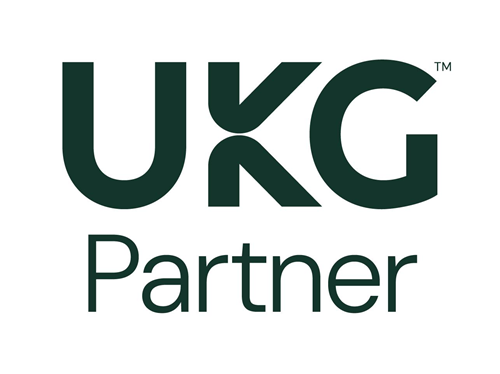By now, many businesses have run virtual meetings with their team — but that doesn’t necessarily mean every business is getting it right.
There was a major learning curve for many organizations which were used to operating entirely in the office as they pivoted to virtual. While many have made progress, there are still some tweaks they (and potentially you) can embrace to make your virtual meetings more productive and engaging.
Here are a few tips for improving virtual meetings that you might be overlooking.
#1) Highlight the video meeting format in the agenda or title.
While video conferencing is the new normal, it’s not necessarily the standard. Don’t assume that attendees know a meeting is going to include video. Clearly state the video meeting format in the meeting agenda or title. For example, name the meeting: “Video Conference with Team” or “Team Meeting (Video Call).”
This denotation lets the team know exactly what to expect for the call. They will know they need to show up ready to turn on cameras and participate on-screen. It also prevents awkward moments when a team member shows up still in their PJs or frustrating moments when a team member dresses for a call only to find out it’s voice-only.
#2) Assign a “host” to each call.
One of the unnatural elements of video meetings is that only one person can hold the floor at any single moment. Unlike in-person meetings where there might be multiple, smaller conversations going on in groups before the meeting officially starts, there is only ever one person who can speak — and speak to everyone on a video call.
This format means that there should be a “host” for every call. The host, most likely the leader of the meeting, needs to take control from the moment the call starts. They should:
- Be the first person on the call
- Welcome attendees and initiate any opening small talk or conversations
- Start the meeting when all attendees have arrived
- Chime in during silences
- Bring the meeting back to the agenda if it veers too far off course
- Conclude and end the meeting
Assign a host and make it clear to the entire call who is leading the meeting. This will help avoid confusion of others trying to lead the call. Fewer people will talk over each other, and hopefully, there will be fewer awkward silences and less wasted time.
#3) Incorporate small talk — but not too much.
Going virtual has created a challenge for organizational culture and community. It removed the “water cooler” element of the office where team members could engage in casual conversation and connection. To make up for that loss of community, incorporate some small talk in your virtual meetings.
Find ways to encourage a bit of small talk at the beginning or end of your meetings — but be mindful of not filling meetings with too many off-topic conversations. To encourage natural, small talk:
- Task the host with opening the meeting by asking team members a brief question (How was your weekend? How’s the weather where you are? Anyone watch the latest trending show?) and giving everyone a chance to chime in.
- Put small talk on the agenda. In your meeting agenda, include a check-in at the beginning of the meeting where everyone can give their win or challenge for the week, or otherwise give team members an opportunity to connect before jumping right into the more specific meeting agenda.
If you still feel disconnected from your team, consider holding a virtual team happy hour or meeting specifically for catching up.
Related: Employee Experience: What Is It and Why Does It Matter
#4) Cut loose team members who are no longer involved.
Team meetings are great for discussing issues that impact all departments. They get an entire group on the same page, but they can also quickly become a waste of time.
For team meetings to be effective, they need to include conversations that are relevant for everyone involved. As soon as the meeting dives deep into topics that aren’t relevant to other team members on the call, it is no longer productive for everyone involved. Keep this in mind during virtual meetings.
Start a meeting out with information that is relevant for everyone involved. Then, slowly cut team members loose if they are no longer needed for the conversation. By allowing people to leave when they are no longer needed, you can give them back their time to work on other things.
#5) Provide tools for a quick WiFi connection.
It’s difficult to have a good virtual meeting when someone’s internet is constantly cutting out or lagging. Trying to not talk over each other is difficult enough without a delay.
If you find that your team members regularly have trouble with a poor internet connection, consider how you can upgrade their WiFi tools. As an employer, it’s your job to make sure your team has the tools they need to do their job. Consider if a team member needs a new router, internet extender, or even a new device (tablet or computer) that would be better equipped for video calls.
#6) Provide tools for a professional video appearance.
If virtual meetings are becoming more and more common in your organization, also provide your team with the tools to make the experience look a bit more professional. Provide tools that improve the look and feel of your video sessions so you can clearly see and hear your team.
Give your team the tools they need to present a professional, polished look during a virtual meeting which may include:
- Camera
- Microphones
- Ring lights
- Zoom backgrounds
Looking and sounding better on camera can give your team more confidence and clarity during virtual meetings. They will be less distracted and more engaged with each other.
Provide a Good Employee Experience With Better Virtual Meetings
Providing positive virtual meetings is part of providing a good employee experience.
You want your team to feel comfortable and supported during virtual working. Give them the tools and systems they need to get their job done well while staying connected with their team — and not dreading the next virtual call.
For more tips on how to provide a good employee experience within your organization, sign up to get more resources on boosting office morale and engagement for the HCM experts at Align.


 Follow This Onboarding Checklist to Set New Hires Up for Success
Follow This Onboarding Checklist to Set New Hires Up for Success



